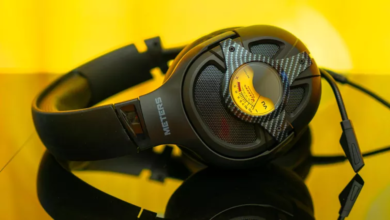CAT6 Between CAT6A: What is the Difference

CAT6 Between CAT6A, The most common form of cable right now, CAT5E, can offer maximum bandwidths of up to 1000mbps. The majority of people would have thought that 1Gbps was excessive a decade ago, but it is now rather standard.
CAT6 and CAT6A feel as though they are currently in a comparable situation. Although CAT6 costs not much more than CAT5E, it allows up to 10 times faster speeds in addition to other advantages. Anyone wishing to install Ethernet cables will find it a desirable alternative because of this. As CAT6 increasingly replaces previous standards, this is also reflected in reality.
CAT6 Between CAT6A, Due to their dependable performance across greater distances, CAT6A cables are better than CAT6 cables. But they also have some drawbacks, like being more difficult to install. We’ll discuss the technical distinctions between the two in this post to assist you choose which one is ideal for your particular needs if you’re unsure which one to choose.
Between CAT6 and CAT6A Comparison
Let’s begin by figuring out how different cable kinds differ in terms of specifications.
Read More: TV as Computer Monitor/Is a TV a Good Computer Monitor?
CAT6 Between CAT6A, Bandwidth/Frequency
Both CAT6 and CAT6A enable 10GBASE-T (IEEE 802.3an-2006), which means that a maximum bandwidth of 10 Gbps is supported. These statistics, however, are based on ideal circumstances alone.
Implementation in the actual world also takes into account elements like cable length and frequency. While CAT6A cables may operate at 500 MHz, CAT6 supports frequencies up to 250 MHz.
For connections over 100 meters, the 10GBASE-T standard specifies a frequency of 400 MHz. Depending on the installation, CAT6 can allow 10Gbps connections up to 55 m (180 ft) because it works at a maximum frequency of 250 MHz. Ethernet over CAT6 operates at 1000 Mbps or a comparable bandwidth over longer distances. Contrarily, CAT6A can support 10Gbit over the entire 100 meters.

CAT6 Between CAT6A, Noise cancellation
In comparison to their predecessors, CAT6 and CAT6A both support wider signal bandwidths. This enables better specifications, such as higher maximum speeds, but it also increases the likelihood of signal interference.
In order to attempt to physically isolate the four pairs and minimize crosstalk, CAT6 cables utilize a divider known as a spline.
In addition, CAT6A uses other techniques including shielding to reduce interference from extraneous noise and maintain the integrity of the signal.
Physical variations
Category 6 Augmented (CAT6A) cables are physically larger, as the name suggests. CAT6A has a larger bend radius and thicker conductors and jackets. Additionally, compatible connectors, patch panels, and jacks are needed. Installing and terminating CAT6A is hence more difficult.

CAT6 Between CAT6A, Do You Need CAT6?
For the majority of the world right now, even CAT5E would suffice. However, laying cables is a decision that must be made over the long run. You might have the current setup for ten years or more.
Considering the past, higher standards like Gigabit Ethernet will probably become the norm within the next few years. You don’t want your cable to be the bottleneck when you do subscribe to such high-speed connections.
CAT6 is the best choice if you want to make your installation future-proof. It’s a great option for both small enterprises and private use.
When CAT6A is preferable
CAT6 Between CAT6A, As previously mentioned, CAT6 only provides 10 Gbps up to about 55 meters, and even that is installation-dependent. Due to manufacturing variations, there are occasional instances where CAT6 cables are rated to higher frequencies, but such are the exceptions.
CAT6A is typically a preferable choice for longer-distance deployments where you require the full bandwidth, such as campuses, big offices, data centers, etc.
Conclusion: CAT6 vs. CAT6A
CAT6 is now the most affordable alternative and is generally a superior choice. However, as even more recent standards like CAT8 are released, CAT6A popularity is also rising and eventually may overtake CAT6.
CAT6 Between CAT6A, In light of that, you typically shouldn’t purchase CAT7. It does not adhere to IEEE standards and is not TIA/EIA approved. Compared to something like CAT6A, it’s frequently just an expensive marketing gimmick.
Some people have also asked whether one is preferable for POE devices. Because the two deliver the same amount of power, you should base your choice on other aspects rather than this one.












2 Comments